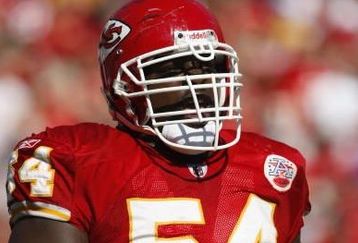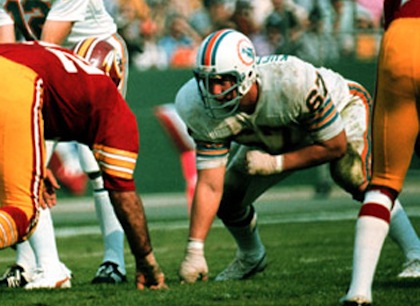@HighwayToHall
On
Saturday, the NFL Hall of Fame will announce the members of the Class of 2014. While
last year was one of the most difficult classes to predict, this one will be
easy. With three first-year eligible locks, a 2nd year candidate
caught in a numbers crunch last year, and a candidate who has been gaining
momentum in recent elections, this is a simple class to assess.
Last year,
the voters, for only the ninth time since the 1970 NFL-AFL Merger, selected
three players in their first year of eligibility. We believe the voters will do
so again.
This
year’s first-time nominees are Buccaneer linebacker Derrick Brooks, Colt wide
receiver Marvin Harrison, Seahawk tackle Walter Jones, and head coach Tony
Dungy.
Brooks
teamed with fellow finalist John Lynch and Hall of Famer Warren Sapp to form
one of the great defenses in NFL history and help Tampa end a streak of 14
consecutive losing seasons with 6-straight seasons with a winning percentage of
.500 or better, which included 5 playoff appearances.
In a
14-year career, Brooks’ accolades are as follows:
11 Pro
Bowls
5-time 1st
Team All-Pro
4-time 2nd
Team All-Pro
2002 NFL
Defensive Player of the Year
Member of
the 2000s All-Decade Team
Member of
the Super Bowl XXXVII Champions
Of the 30 defensive
players named to 8 or more Pro Bowls while being selected a 1st-Team
All-Pro 5 or more times, all 26 eligible for the Hall have been inducted, with
Brooks, Ray Lewis, Junior Seau, and Ed Reed waiting their turns. Brooks won’t
wait long. He walks in on the first ballot.
Our next first
year eligible player is Harrison . Let’s begin by looking
at Harrison ’s numbers, and where
they rank on the career lists.
|
Receptions
|
Receiving Yards
|
Receiving TDs
|
Receiving Yds/G
|
TDs
|
|
1102
|
14580
|
128
|
76.7
|
128
|
|
3rd
|
6th
|
5th
|
4th
|
9th
|
Receiving
numbers have become increasingly inflated in recent years. As a result, it is
more difficult to evaluate receivers. For example, of the 13 players with 8 or
more 1000 receiving yard seasons, only Steve Largent retired before the 2000s
started. Most of the receivers are contemporaries and will compete with each
other for the few Hall of Fame spots each year. As time goes on, and more
receivers appear on the ballot, they will continue to cancel each other out.
Although receiving numbers are inflated in this generation, Harrison ’s numbers are
overwhelming.
What hurts
Marvin Harrison, oddly enough, is that he made the game of football look too
easy. Though they only won 1 Super Bowl, Harrison and Peyton Manning were
virtually unstoppable. Some have criticized Harrison ’s credentials by saying
he played with Manning. Of the 22 modern era Hall of Fame wide receivers, 14
caught most of their touchdown passes by Hall of Fame quarterbacks. Punishing Harrison for playing with
Manning is ridiculous. Not only was Harrison a 3-time 1st
Team All-Pro, 5 times he was a 2nd Team All-Pro. His numbers are
historically great. Part of the reason a receiver (Cris Carter) was selected last
year, was the voters’ awareness of the growing backlog of receivers. Adding Harrison to the trio of Brown,
Carter, and Reed would have been a nightmare for the voters.
The next
candidate, Walter Jones, played in a strong era for offensive tackles. Richmond
Webb, Erik Williams, Willie Roaf, Tony Boselli, Jonathan Ogden, Willie
Anderson, and Orlando Pace all served as contemporaries to Mr. Jones. With
these men playing at the same time, there were not a lot of All-Pro spots
available. Things were further complicated when Larry Allen spent time at
tackle and took post-season honors away from some of these players.
Nonetheless,
Walter Jones was selected to 9 Pro Bowls, named a 1st Team All-Pro 4
times, and named a 2nd Team All-Pro twice. He was chosen a 1st
team member of the All-Decade Team of the 2000s alongside 2013 Hall of Fame
selection Jonathan Ogden. He helped the Seahawks to 6 playoff appearances,
spending his entire career with the club, appearing in 180 regular season
games.
His
accolades place him in some exclusive company. 15 offensive linemen have earned
4+ 1st Team All-Pro selections since the 1970 NFL-AFL merger: 12 current
Hall of Famers, 2 players not yet eligible, and Mr. Jones.
Walter
Jones stands among the all-time greats. Despite playing during a wonderful era
of offensive tackles, Jones collected enough accolades to join some impressive
company. He consistently erased the opponent’s top pass rusher while opening
gaping holes for Shaun Alexander. Like Larry Allen and Jonathan Ogden last
year, Jones will be a first-ballot Hall of Famer.
The final
first-year nominee is Tony Dungy. In 13 seasons as a head coach, Dungy posted a
career record of 139-69, which included 10 double-digit win seasons and 11
playoff appearances. In only one season, his first in Tampa Mount Rushmore of coaches (or at least
are in the discussion). Dungy falls just short.
We next need
to mention John Lynch and Morten Andersen who, although not in their first year
of eligibility, are first-time finalists. Andersen is trying to become only the
2nd kicker to make the Hall of Fame, oddly during a year when one of
the Seniors Committee nominees is a punter. And Lynch is the first safety to be
a finalist since 2002. Only nine safeties are in the Hall of Fame and the
career of only one (Ronnie Lott) began after the NFL-AFL Merger. Some of the
voters are anxious to discuss a safety. That will be enough for Lynch to make
it pass the first cut. But it will take a couple of years before his candidacy
gains enough momentum to carry him into Canton

To assess
the remaining candidates, and therefore select the final 2 inductees, it is
useful to look at the process. The voters first narrow the list of 15
candidates to 10. They then vote again to narrow the list of 10 candidates to
five. The final list of five candidates then requires 80 percent of the vote to
gain enshrinement. Of the final 10 candidates in 2011, five gained induction
that year, while four gained induction the following year. Only Andre Reed was
left out when Chris Doleman was selected over him. In contrast, of the final 10
candidates in 2012, five gained induction that year while only 2 gained
induction the following year, as 3 first-year nominees earned the remaining
spots. As such, let’s look at the players remaining from the final 10 last year
to continue our analysis. Those candidates are Michael Strahan, Charles Haley,
Jerome Bettis, Andre Reed, and Aeneas Williams. These five were selected over
Tim Brown, Edward DeBartolo, Kevin Greene and Will Shields last year, so it is
probable (although not guaranteed) it will occur again. So when the selectors
vote to narrow the field from 15 to 10, Brown, Debartolo, Greene, Shields, and
Andersen will be eliminated.
As for the
remaining five candidates, Reed’s case is hurt by Harrison , just as in past years
he was hurt by the presence of Cris Carter and Tim Brown. Although Reed
performed better in the postseason, he also had the misfortune of playing in Buffalo Canton
Last year,
Bettis finally made it beyond the first round of cuts. But he consistently has
been eliminated before Reed, Williams, and Haley in previous elections so there
is no reason to believe the voters will favor him more this year.
Michael
Strahan has been a walking advertisement since his retirement. Despite Hall of
Famer Warren Sapp’s outspoken criticism of him, they both have near identical
resumes. Super Bowl champ; NFL Defensive Player of the Year; seven-time Pro
Bowler; four-time First Team AP All-Pro; two-time Second Team AP All-Pro, and
member of the All-Decade Team. Strahan was a defensive end while Sapp was a
defensive tackle, but both terrorized quarterbacks. Strahan is criticized for
breaking the single-season sack record when Brett Favre fell down in front of
him. Sapp is criticized for taking plays off.
Strahan’s
candidacy is complicated by the presence of Charles Haley on the ballot. Many
times, players from the same position compete for votes, and ultimately cancel
each other out. Haley was named to "only" five Pro-Bowl teams and
named a First Team AP All-Pro twice. He recorded 100.5 sacks, well behind
Strahan's 141.5. But he was a key part of five Super Bowl champions. That
carries a lot of weight with the voters. And his Hall of Fame case has been
gaining momentum in recent years.
Our final candidate
is Aeneas Williams. A three-time First Team AP All-Pro and a two-time Second
Team All-Pro, Williams was named to eight Pro Bowls. Stuck with the Cardinals
for so many years, Williams intercepted 55 passes in his career and is fifth on
the all-time list with 13 non-offensive touchdowns. A great player, Williams is
aided by the fact no one will steal his votes. But we believe he falls just
short as we predict both Strahan and Haley will join the Class of 2014. If the
rules allowed the Hall to select 6 modern-era nominees for induction, Williams
would be the 6th name.
That
leaves us with a projected Class of 2014 as follows:
Derrick
Brooks
Charles
Haley
Marvin
Harrison
Walter
Jones
Michael
Strahan
2015
features a “weak” class of first-year eligible players, including Kurt Warner,
Orlando Pace, Junior Seau, Torry Holt, Isaac Bruce, and Edgerrin James. Although
1 or 2 of these players will gain election, next year will be a great
opportunity to free up some of the backlog that has been building in recent
years.








